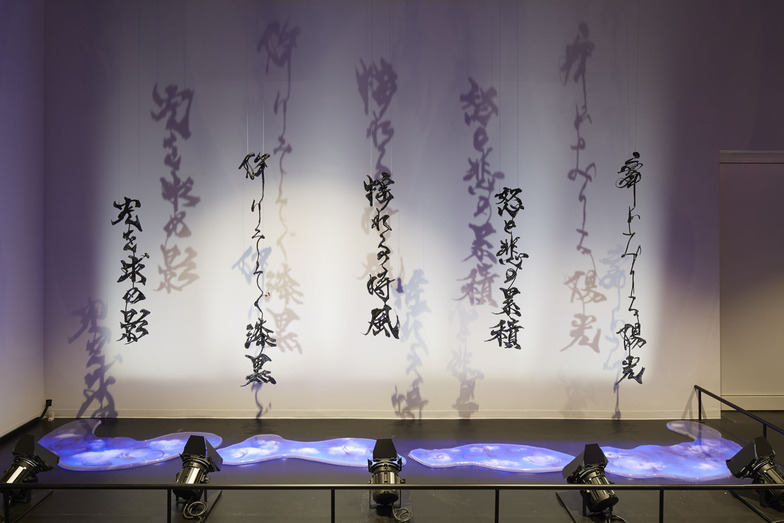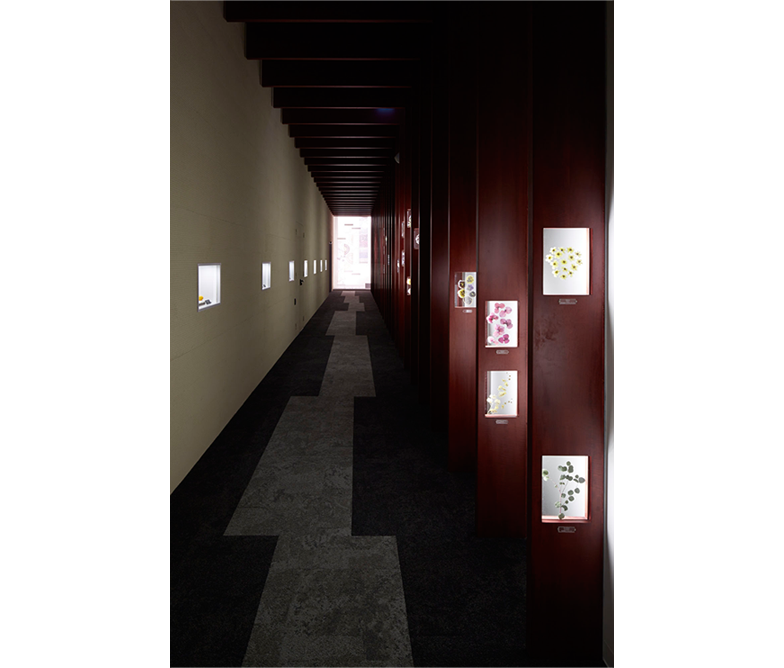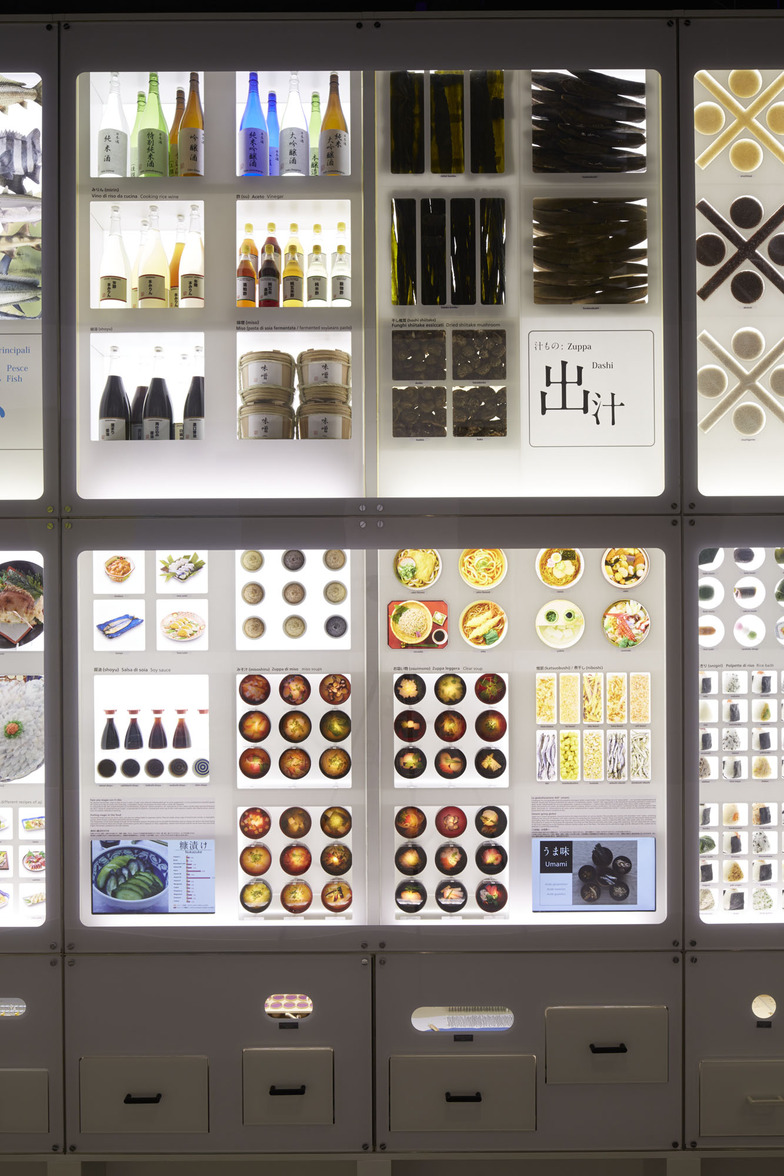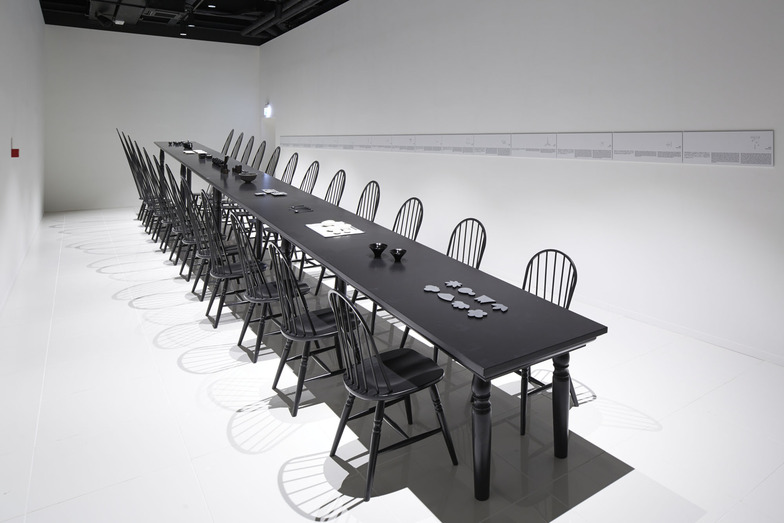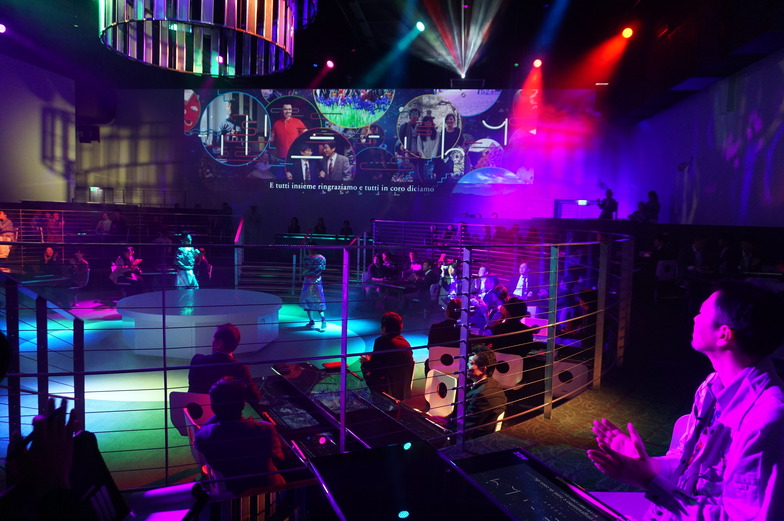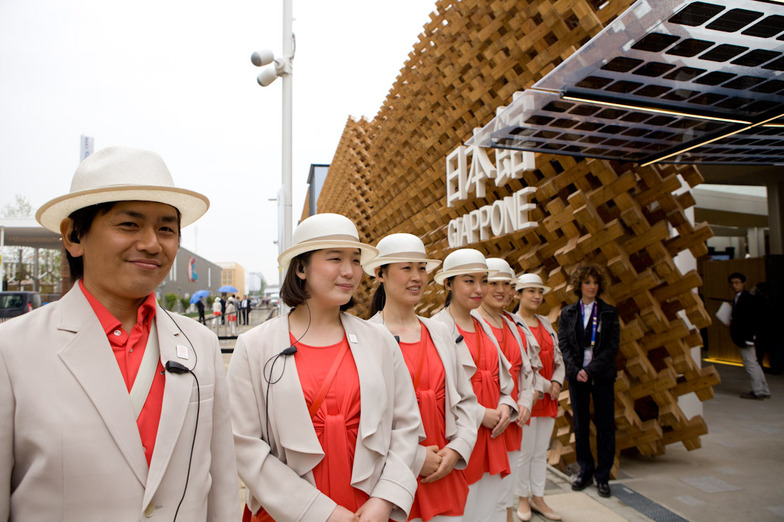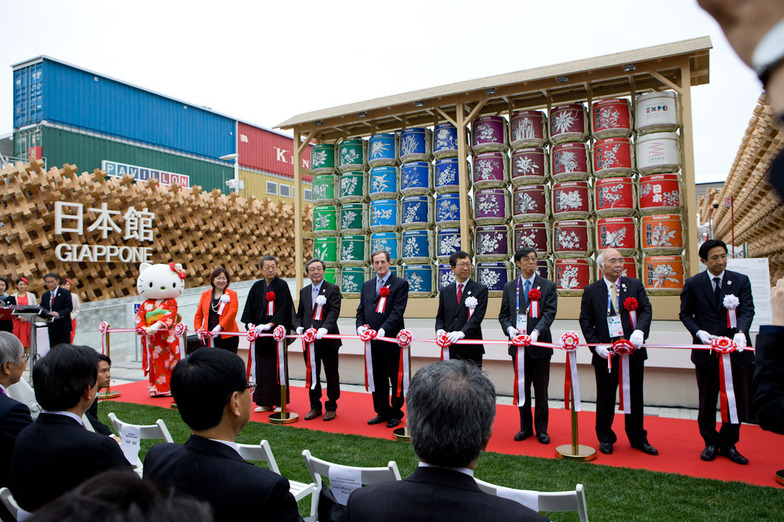On May 1st, the Milan International Exposition (Expo Milano) opened. Under the theme "Feeding the Planet, Energy for Life," over 140 countries and regions are participating. Dentsu Inc., alongside Japan's most elite creators, is showcasing the appeal of traditional Japanese cuisine to the world using cutting-edge technology. This time, we present an overview of Expo Milano and will continue to report on it from various perspectives until its closing in October.
Editorial Composition: Aki Kanahara, Dentsu Inc. Event & Space Design Bureau
Dentsu Inc. is the overall producer of the Japan Pavilion
The Milan Expo opened on May 1, 2015! Running for 184 days until October 31, it centers on the theme of "food" and expects approximately 20 million visitors during the event period. Dentsu Inc. is the overall producer of the "Japan Pavilion," handling a wide range of tasks from architecture and exhibitions to the restaurant, operations during the event period, and PR/events.
The exhibition production, led by Jun Naito (Director, Dentsu Inc. Event & Space Design Bureau), showcases the appeal of Japanese food and culinary culture through an "All Japan" collaboration with top creators representing Japan.
Key participating creators include calligrapher Shishu, TeamLab's Toshiyuki Inoko, Rhizomatiks' Seiichi Saito, Kyoto University of Art and Design Professor Shinichi Takemura, robotics expert Ryoji Kishimoto, and nendo's Oki Sato. This powerful team was assembled as "Japan's representatives" to convey Japan's appeal to the world.
Japan Pavilion Exhibition Structure
The Japan Pavilion's exhibition concept is "A Journey Through 'Harmonious Diversity'." Visitors can learn about Japanese food, from its origins to the dining table, by exploring multiple exhibition spaces.
Each exhibit employs various cutting-edge technologies, such as interactive presentations using sensing technology and smartphone apps linked to the exhibits. These are combined with Japanese design elements to create unprecedented new exhibition experiences.
To realize this challenging project, we conducted numerous simulations from the perspective of general visitors alongside Executive Producer Miki Kikutake (Dentsu Inc. Event & Space Design Bureau).
【PROLOGUE: Shishu】
Serving as the gateway to the Japan Pavilion, it artistically unfolds with calligraphy as its motif.

【HARMONY: teamLab】
Introduces Japan's food production regions. Visitors are immersed in beautiful Japanese rural landscapes through a video space surrounded by mirrors and a waist-high "rice ear screen."
【CORRIDOR】
A corridor of hospitality. Introduces seasonal festivals through pressed flower art, accompanied by sound and scent installations.
【DIVERSITY: teamLab】
A waterfall of diversity featuring approximately 1,000 pieces of content related to Japanese food and culinary culture. Visitors can touch cards that catch their interest to download the information to their smartphones.

【LEGACY】
A showcase condensing the appeal of Japanese cuisine. Through actual displays and food toy models, it introduces various Japanese food menus and their cooking methods.
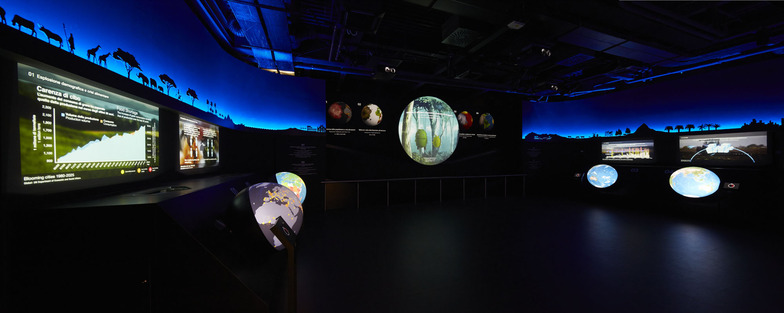

【INNOVATION: Shinichi Takemura & Robot Ryoji Shimizu】
A future lab space where global challenges are shared and Japanese solutions are presented.
【COOL JAPAN DESIGN GALLERY: Ooki Sato】
Proposals for new dining designs woven together by designers and artisans.
【LIVE PERFORMANCE THEATER: Rhizomatiks Seiichi Saito】
Communication born at the dining table. A future restaurant connecting the world with smiles.
The popular Japan Pavilion
The Japan Pavilion has been bustling daily since opening, with lines reaching up to one hour long.
The Italian national newspaper Corriere della Sera, in its May 4th edition, featured the Japan Pavilion as one of the most popular pavilions. Among the many pavilions from various countries, the Japan Pavilion's architecture stands out, featuring a three-dimensional wooden lattice structure—a traditional Japanese construction method—used throughout the pavilion, creating a uniquely Japanese appearance. The restaurants are also thriving, with both "Mino Kichi" and "Japan. Star Dining." enjoying continuous patronage and high praise. The Urasenke event continues in the event plaza until May 5.
Throughout the event period, we will continue to host events introducing various aspects of Japanese culture, centered around food, to our international visitors.
Architectural design featuring three-dimensional wooden latticework that evokes a Japanese atmosphere
Special Ambassador Hello Kitty participated in the Japan Pavilion opening ceremony and ribbon-cutting on May 1
On May 4th, Minister of Agriculture, Forestry and Fisheries Yoshimasa Hayashi and Bruno Pasquino, Government Commissioner for Expo Milano, visited the pavilion
Restaurants "Mino Kichi" and "Japan. Star Dining."
Event by the Urasenke School of Tea Ceremony at the Event Plaza
Japan Pavilion featured as the No. 1 popular pavilion in Italy's national newspaper "Corriere della Sera"
Next time, Mr. Toshiyuki Inoko of teamLab and Mr. Seiichi Saito of Rhizomatiks will discuss the creative intent behind their respective works in a roundtable discussion with Mr. Jun Naito of Dentsu Inc. Event & Space Design Bureau.


